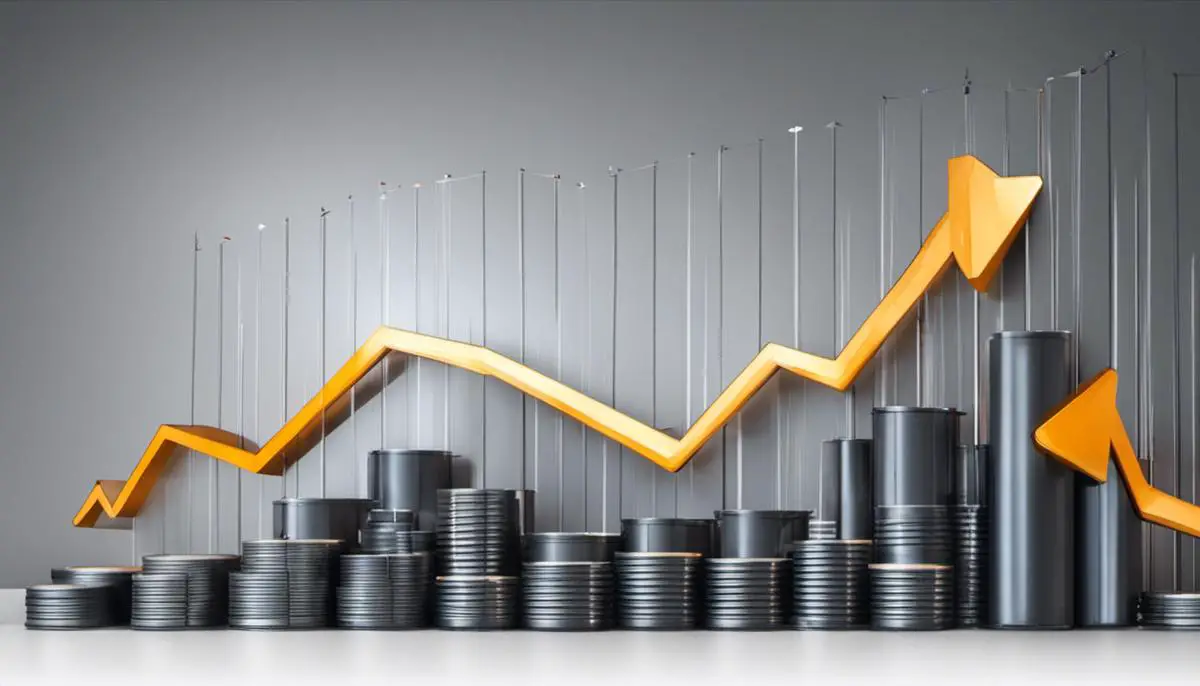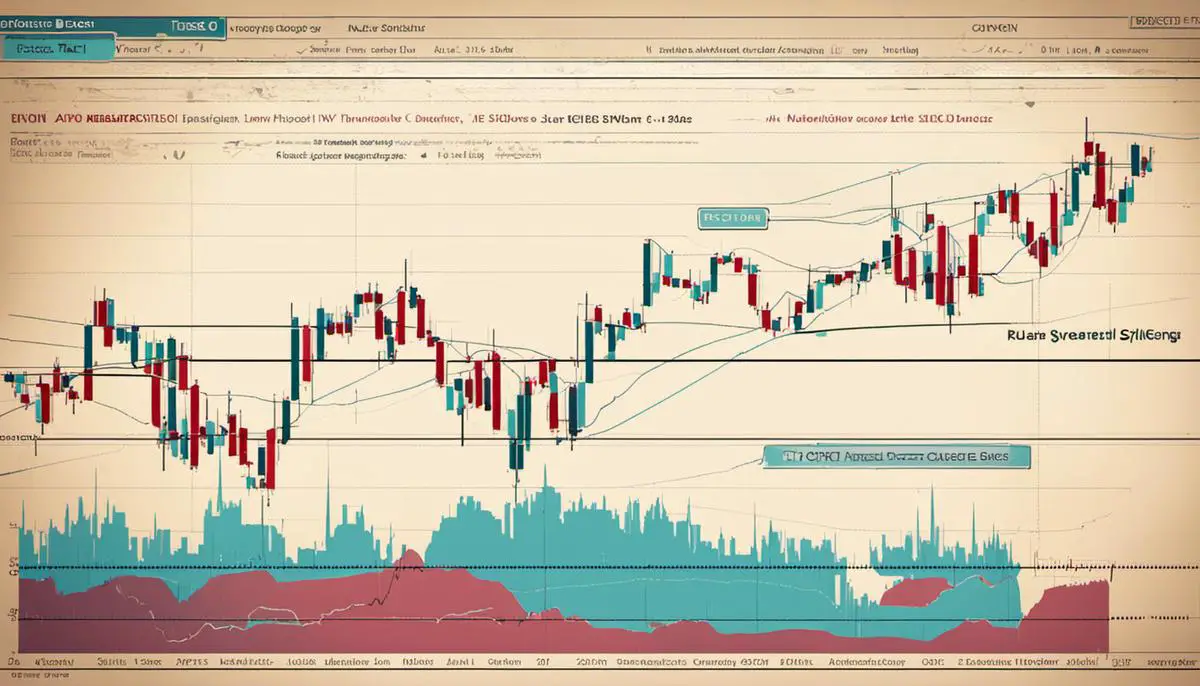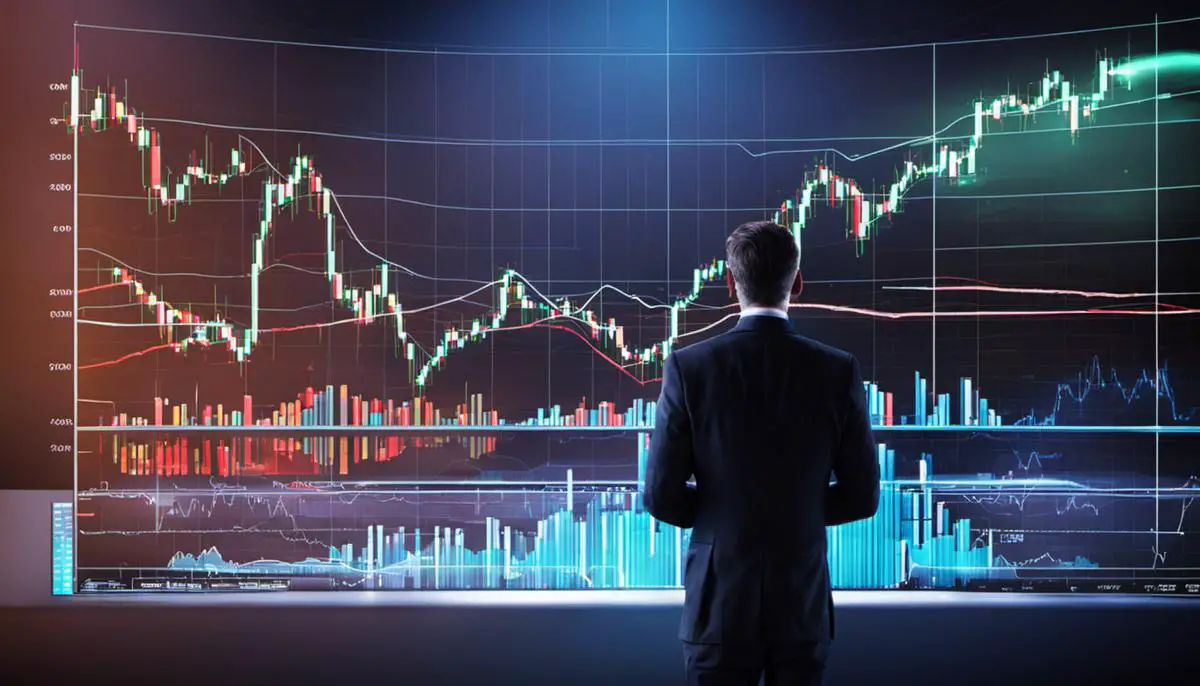In the complicated sphere of financial markets, understanding and interpreting data plays a paramount role in strategising and optimised decision making. It is here that Candlestick charts emerge as significant tools for marking price movements in the stock, forex as well as burgeoning cryptocurrency markets. With their unique pattern recognition, these charts paint a clear picture of the market forces at play – reflecting the psychological and emotional state of the market. This article revisits the fundamentals of these candlestick charts, and subsequently delves into their usage across various forms of investments – be it traditional forms like stocks and forex, or the comparatively newer domain of digital currencies.
Basics of Candlestick Charts
((TEXT START))TITLE: Decoding the Fundamentals of Candlestick Charts for Effective Investment Monitoring
In the ever-evolving world of investment, understanding chart patterns stands as an invaluable skill for any savvy business individual. Among these, the candlestick chart triumphs some of the most sough-after charting technique. Hailing from the far East, this superior methodology intelligently blends aesthetics with functionality, providing a comprehensive look at financial market dynamics.
Cracking open the basics, our initial focus rests on two candlestick components: the ‘body’ and the ‘shadow’. The body signifies the range between an asset’s opening and closing price. Coloured in for a lower closing price, or left blank for a higher, it forms the visual centrepiece of the pattern. Emphasizing volatility, the shadow denotes the difference between extreme prices and those of opening and closing within a given timeframe.
Keen-eyed investors often use these charts to identify market trends. Barring the market being in equilibrium, three main patterns emerge: bullish, bearish, or indecisive. A series of white or unfilled bodies indicate a bullish market, reflecting buyers’ momentum. Conversely, a bearish market exhibits a run of coloured or filled bodies, hinting at sellers dominating the trade.
Subtler than these are ‘Doji’ patterns, marked by their minuscule bodies or a lack thereof. These patterns shine a light on investors’ indecisiveness, denoting an imminent tug-of-war between buyers and sellers, hence a potential shift in momentum.
However, the charm of candlestick charts extends further into the realm of complex patterns. ‘Hammer’ and ‘Hanging Man’ patterns are classic examples, shaped by a small body at the top end and a long lower shadow. While their identical shapes might mislead the untrained eye, their contextual appearances play a vital role. Amid a downtrend, a Hammer hints at a potential upswing, whereas a Hanging Man in an uptrend suggests a possible downfall.
Reading these charts equips investors with an edge; it’s a candle-lit pathway to improved decision making, championing anticipation over reaction. However, as with any investment tool, the candlestick chart is not infallible. To harness its true potential, wisely consolidate it with other technical analysis methods.
The beauty of this ancient Japanese technique lies not merely in its visual appeal but in its rich context and precision. A vortex of information awaits the astute observer. Crafted through centuries of trading, candlestick charts are indeed the ‘Rosetta Stone’ to decode the cryptic script of financial market behaviour. So, blend strategic thinking with these insightful plots and ignite a spark in your investment ventures. After all, in the realm of investment, knowledge is not just power, but profit.
((TEXT END))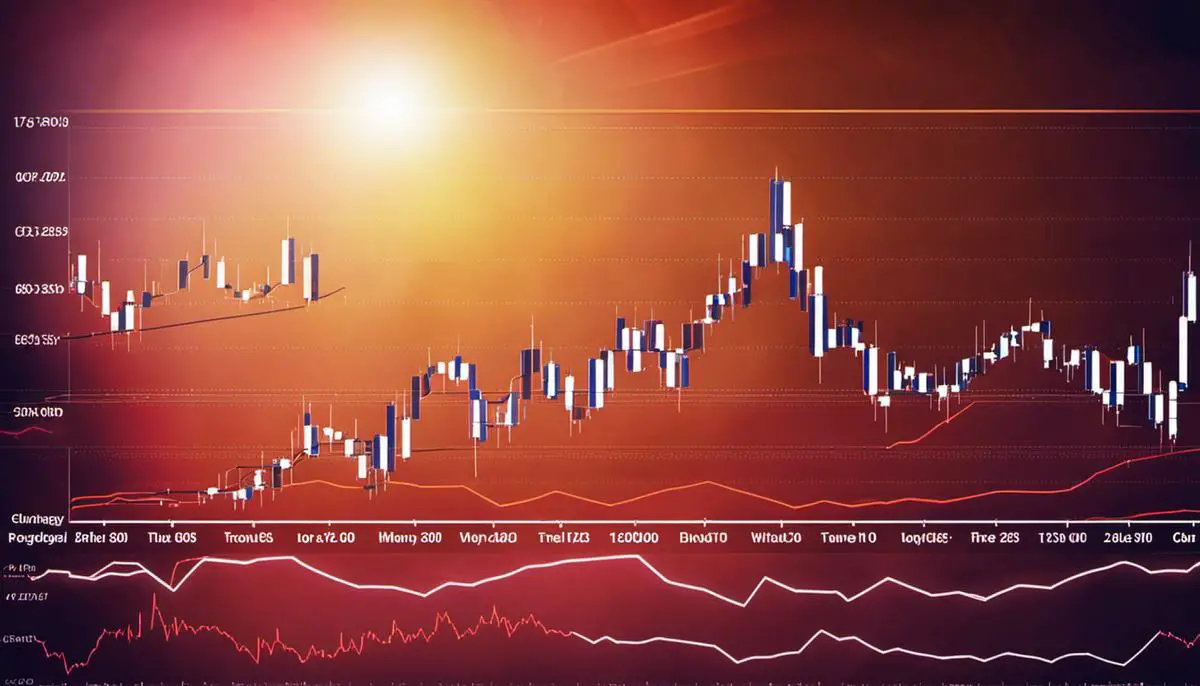
Candlestick Charts in Stock Market Investments
Candlestick charts have often been referred to as the ‘footsteps of the bulls and the bears’, a nod to their ability to reflect market sentiment succinctly. Indeed, there’s an art to interpreting these charts, an art that can serve as a guide in unchartered investment landscape and present a canvas of storylines in the stock market.
Visualise a battlefield – the bulls and bears representing the two warring factions, separated by the neutral line, squaring off in the ultimate test of strength and strategy. This is not unlike the arenas of stock market investing. Candlestick charts convey not just data but, when comprehensively interpreted, reveal the emotional ebb and flow underlying price action.
Selecting an investment isn’t just about returns, it’s about taking calculated risks. This is where candlestick charts offer a convincing strategy. They illustrate supply and demand dynamics over various time frames, allowing one to visualise the intensity of bullish or bearish sentiment.
Consider, for instance, the Engulfing pattern – whether bullish or bearish – it signifies a potential reversal in the trend. This, discernibly, helps outline the investor’s next course of action. Contrarily, a Shooting Star pattern can evoke a cautionary response, signalling a looming bearish reversal. Familiarity with these patterns could be akin to possessing your own financial crystal ball.
Delving deeper, you might explore the concept of the Gap that indicates a dramatic increase or decrease in the price of a stock from the close of the previous day to the open of the next. Three significant types of Gaps – Breakaway, Runaway, and Exhaustion, can significantly aid in discerning trend momentum and potential turning points.
The trading world’s fondness for candlestick charts isn’t solely driven by their visual appeal—they also offer substantial predictive value. A study by Morris (1995) showed that successful prediction rates reached up to nearly 60% by utilising candlestick charting.
An extraordinarily savvy investor would, however, caution against becoming too reliant on these charts alone for decisions. Though they contain vast information, supplementing them with other tools like trend lines, volume, or momentum indicators can lead to more solid investment decisions. A broadcasting rule of thumb: ‘Candlestick charts form one aspect of a trading strategy, they shouldn’t compose the entire strategy’.
Stock market investing, while brimming with potential, remains inherently uncertain. And while investing is no mere gamble, the markets often display a whimsicality that ventures into the arena of unpredictability. Through this maze, candlestick charts have emerged as a beacon, guiding investors towards making informed and efficient judgments.
Nonetheless, mastering the interpretation of candlestick charts is as much an art as it is a science. It demands perseverance, an understanding of the broader economic factors at play, and a keen eye for detail. The charts’ ability to reflect market sentiment succinctly adds another dimension to the investor’s toolkit, enhancing decision-making capability in the increasingly tumultuous and exhilarating world of stock market investing.

Candlestick Charts in Forex Trading
Having already delved deep into the cavernous world of candlestick chart intricacies, it’s time to cast a wider net and connect the dots. Notably, candlestick charts aren’t solely tools of isolation; they echo market sentiment at large. Astute Forex traders harness this feature, enabling them to gauge the pulse and character of the market.
The Forex market, like every market, is driven not only by fundamentals but also by sentiment. The bullish engulfing and the shooting star, for instance, are patterns traders can exploit to predict future trends. A bullish engulfing pattern signifies the overturn of a bearish trend, thus representing a strong buying sentiment. In contrast, the shooting star pattern flag hints at an upcoming end to a bullish trend, indicating a strong selling sentiment.
Traces of sentiment can even be found in the gap between closing and opening prices. These ‘gaps’ aren’t just missing data; they embody significant market events that occur when the market isn’t operating. Even though the Forex market operates 24/7, the transition from one trading day to the next can still cause a gap. Interpreting these gaps holds key insights for Forex traders looking to remain ahead of the curve.
While the candlestick offers predictive value, it’s essential to understand its limitations. Technical analysis never guarantees foolproof results; candlestick patterns merely increase the probability of certain outcomes. As Forex traders, incorporating other indicators such as moving averages, relative strength index (RSI), or Bollinger Bands can add an extra layer of reassurance.
It’s worth mentioning that while candlestick charting does hold significant predictive power, it does not ensure an escape from the inherent uncertainty and unpredictability of the Forex market. The volatile nature of this market requires investors to be resilient, enlightened, and capable of making fast-paced decisions. In essence, merging experience, industry knowledge, technical analysis, and enchanted intuition form the recipe for success.
Undoubtedly, mastering the art of candlestick analysis is no mean feat. It demands perseverance, relentless learning, and an unyielding spirit. However, the rewards make this daunting journey worthwhile. Once this elaborate task is mastered, intelligent interpretation of candlestick charts can greatly enhance the decision-making process, proving to be a real game changer in Forex trading.
In closing, the power of candlestick charts extends far beyond simple pattern identification. By echoing underlying market sentiment, predicting future trends, and enhancing decision-making prowess, candlestick charts prove to be a formidable asset in the toolkit of the astute Forex trader.
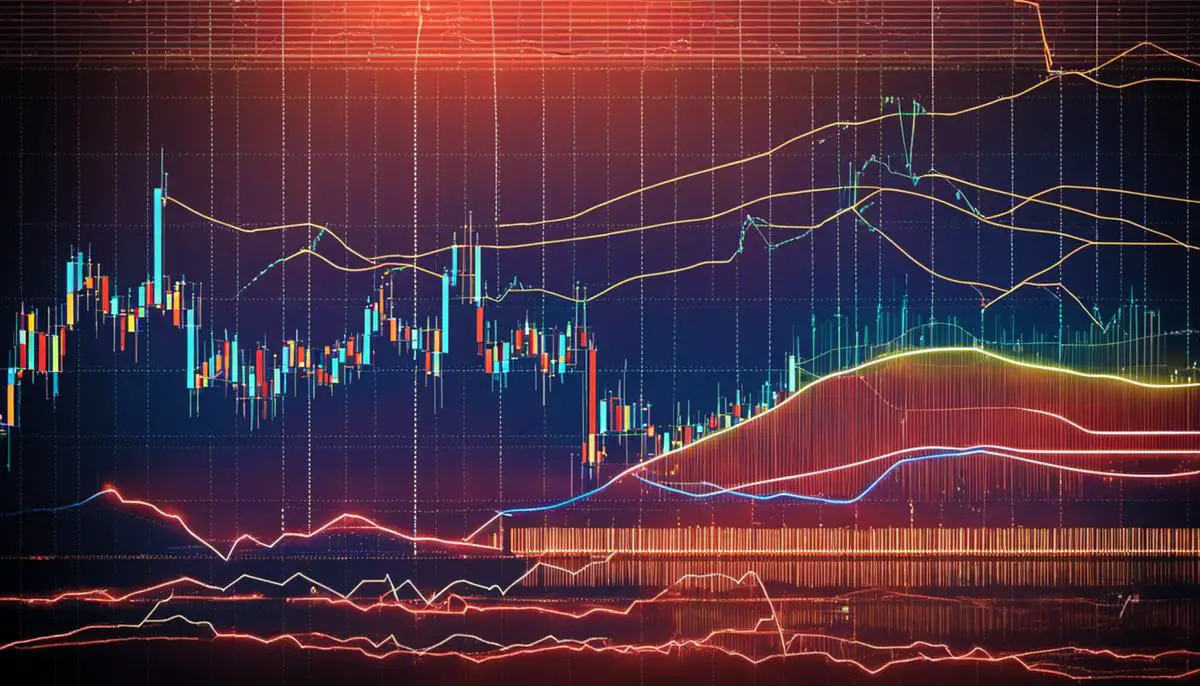
Candlestick Charts in Cryptocurrency Trading
Diving into the Nexus of Candlestick Charts and Cryptocurrency: Enlightening the Path to Profitable Trading
Standing at the crossroad of innovation and traditional best practices, contemporary digital trading offers fresh avenues to financial success, and in that prospect, there is one tried-and-true tool that bridges the gap between the old and the new – candlestick charts. This phenomenal tool isn’t just confined within stock or forex trading but has extended into the ever-evolving corridors of cryptocurrency trading, which is stirring the investment world with its unprecedented gains and unpredictable behaviour.
As we journey into the peculiar sphere of cryptocurrency trading, the butterfly effect of the Internet boom mirrors into a brimming echo chamber of virtual assets; yet successful navigation is unthinkable without a compass. In this respect, consider candlestick charts as the Polaris guiding traders through rough seas, illuminating possibilities beyond the horizon.
Why are such age-old charts deeply entrenched in the landscape of cutting-edge cryptocurrency trading, you ask? The surreal real-time price fluctuation of cryptocurrencies births patterns in candlestick charts that decode market sentiment, becoming tangible interpreters of the captivating crypto tales of triumph or caution.
Patterns hold the key to unravelling market behaviour, and in deciphering cryptocurrency’s dance, engulfing patterns, shooting stars and gaps deliver priceless insights. Engulfing patterns tend to signal a potential reversal – a bullish engulfing pattern might suggest a price upward trend while a bearish one could warn traders about a downturn. The intriguing shooting star pattern, on the other hand, appears when prices rise significantly, making a star-like formation, usually implying a bearish reversal.
Perhaps, the most riveting element in candlestick chart analysis is the gap. In the cryptocurrency market, a discrepancy between the closing price of one trading period and the opening price of the next one creates a gap. Broadly classified into four types – common, breakaway, runaway, and exhaustion – these gaps are discerning pointers towards an impending bullish or bearish trend.
Nonetheless, the craft of extracting priceless data from candlestick patterns is as intricate as crafting a Fabergé egg. Every line, curve, and space matters. While the potential for robust analysis exists, traders must tread this path with caution, acknowledging the extent of candlestick charting. Like any other standalone analytical tool, it encounters limitations and isn’t immune to false signals. Successful cryptocurrency trading isn’t about relying on one tool but constructing an ark of diverse portfolio, indicators like moving averages, RSI, Bollinger Bands supplementing the candlestick structure.
At the intersection of knowledge and intuition, the volatile path of digital trading requires traders to add resilience to their armoury. In the words of Charles R. Swindoll, “Life is 10% what happens to you and 90% how you react to it.” Crypto market mirrors this sentiment, thus nurturing resilience is an essential trait. Voyage through the unpredictable seas of trading certain ensures rough patches, and each downturn should serve as a steppingstone to refine strategy and reinforce investment prowess.
On an ending note, mastering the art of candlestick analysis remains exigent yet rewarding. It’s a testament to the adage – knowledge is power. Braving the tumultuous crypto world demands warriors who are willing to grasp the language of candlestick patterns, deciphering the romance of bulls and bears. Making sense of erratic market sentiment through such analysis does not deliver sure-shot success but equips traders with informed decision-making ability, reducing speculation, and maximising chances of a fruitful voyage.
Enter the exhilarating world of cryptocurrency trading through the portal of candlestick charting, orchestrated with other strategic tools, creating a magnificent symphony of profitable investments. Your journey awaits. Embrace the perils, celebrate the gains, and sail beyond the horizon.
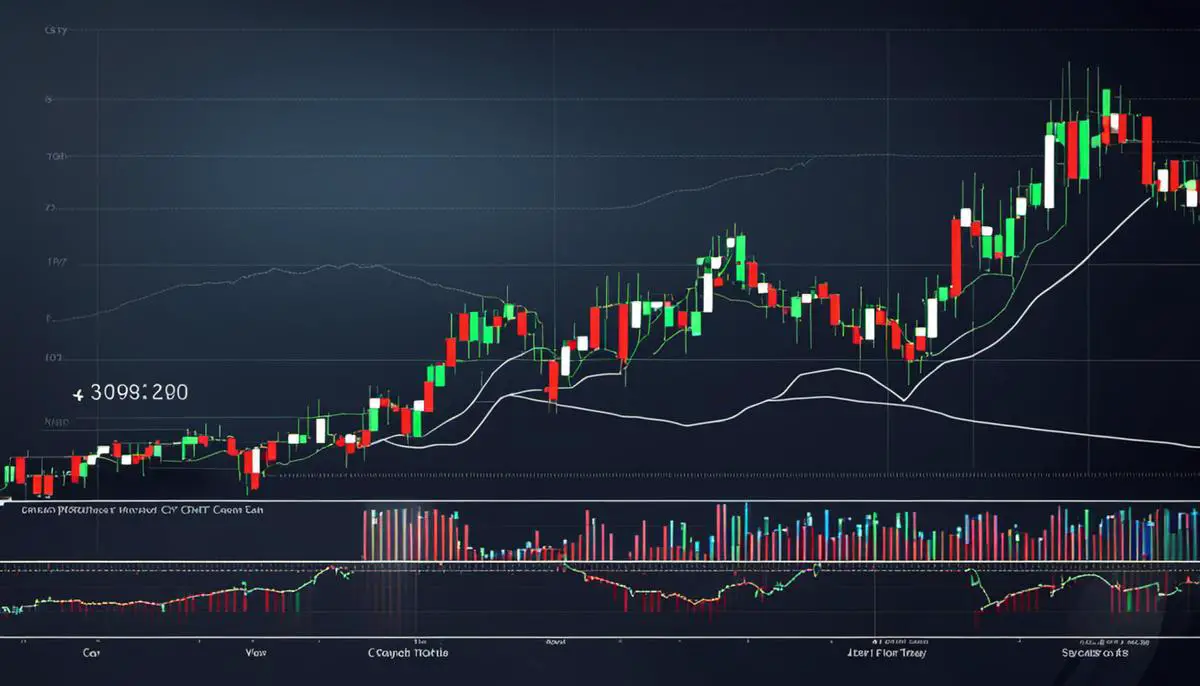
In synthesizing these seemingly complex concepts, one discovers that the seemingly archaic Candlestick charts continue to assert their relevance in today’s dynamic investment environment – from stock valuations to forex trading and the cryptospheres. Their unique ability to visually encapsulate market sentiment, when coupled with other technical indicators, presents a powerful combination for informed decision making. As we navigate the mercurial world of investing, cultivating an understanding of these charts will invariably serve as a potent aid, aiding in prudent, timely and often rewarding trading decisions. Thus, whether we participate in the seasoned realms of the stock market, forex or brave the volatile currents of cryptocurrency, the insights offered by candlestick charts are both compelling and invaluable.

